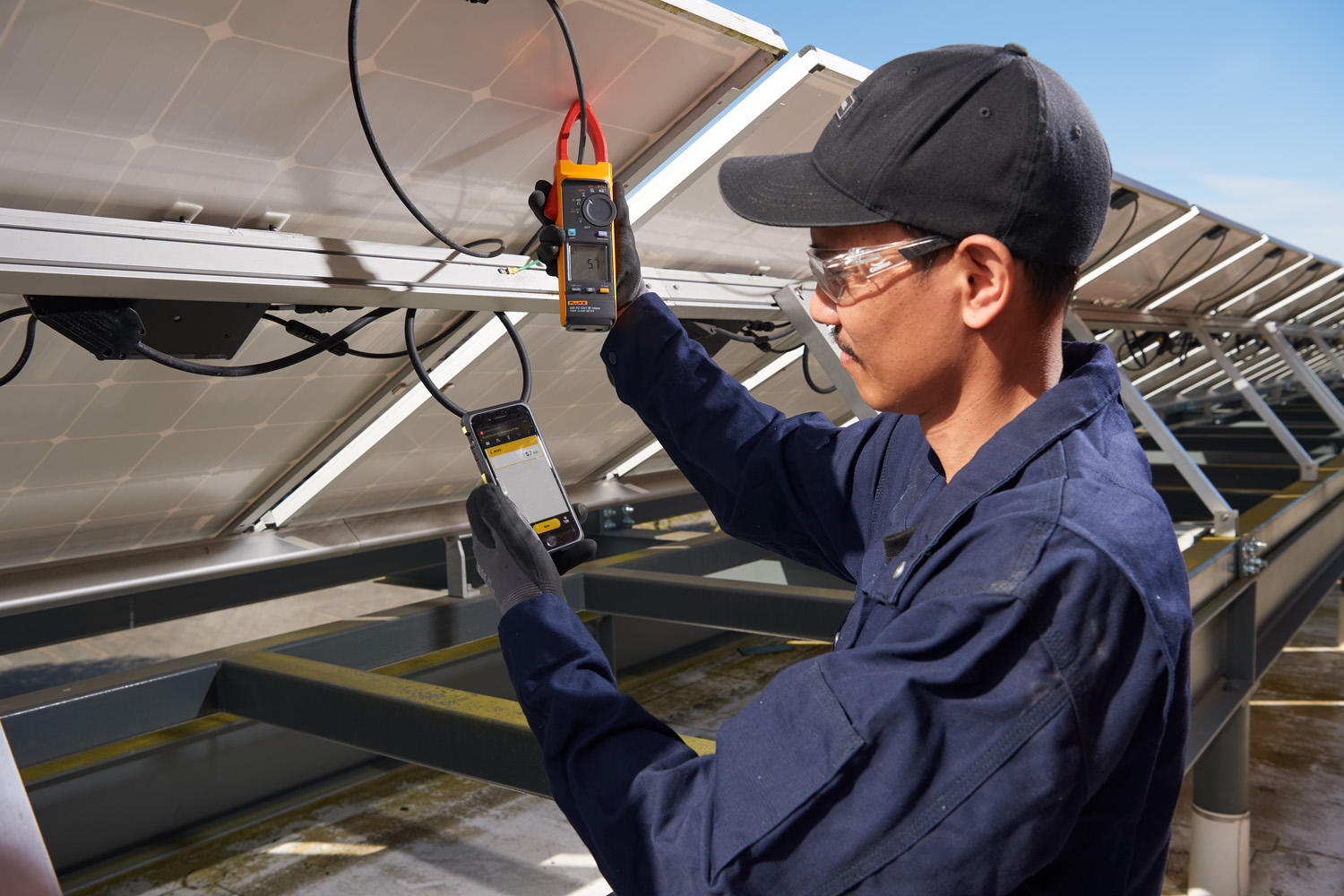Fluke is experiencing increasing demand for high-precision handheld devices which can measure photovoltaic (PV) systems. This dynamic growth requires technicians who know how to troubleshoot PV systems efficiently and effectively.
The new-to-market Fluke 393 FC Clamp Meter is the world’s only CAT III 1500 V rated true-rms clamp meter which enables technicians to take measurements in DC environments.
1. Troubleshooting PV panels
Firstly, check the output of the entire system at the metering system or inverter. Before commencing troubleshooting, also check and record the inverter’s input voltage and current level from the array.
The combiner box can be a great place to troubleshoot the system because the individual wires from the modules are brought back to it. Each module may have a fuse that should be checked with the Fluke 393 FC.
Wiring problems and loose connections may cause a module to produce a low voltage. These can be traced using the Fluke 393 FC to check wiring connections at the junction boxes.
The Fluke 393 FC provides an audio polarity warning when testing Voc. If the polarity is reversed, it may mean that other circuits in the combiner box are unintentionally connected in series, resulting in voltages over the maximum inverter input voltage.
2. Troubleshooting PV loads
Start by checking the load switches, fuses, and breakers with the Fluke 393 FC to see if the correct voltage is present at the load’s connection. Next, check the fuses and circuit breakers. Replace blown fuses or tripped breakers. If the load is a motor, an internal thermal breaker might be tripped or there might be an open winding in the motor. For testing purposes, plug in another load and see if it operates properly.
Check for broken wires and loose connections. Clean all dirty connections and replace all bad wiring. With the power off, check for and repair any ground faults. If any fuses blow or breakers trip again, then a short will need to be repaired.
If the load still does not operate properly, use the Fluke 393 FC to check the system’s voltage at the load’s connection. The wire size may be too small and need to be increased. This will show up as a low voltage at the load. Resolve this by reducing the load on the circuit or run a larger wire.
3. Troubleshooting PV inverters
The inverter converts DC from the PV system into AC power for building use. For troubleshooting the AC side, use the Fluke 393 FC to check the inverter’s output voltage and current levels. As the Fluke 393 FC produces a true-rms reading, you can use the voltage and current to measure and record the power output in kilowatt (kW). Use the inverter display to show the current total energy in kilowatt hours (kWh) and compare it to the last inspection. When troubleshooting the DC side, check the DC power and save the reading to the Fluke Connect™ app on your phone.
If the inverter does not produce the right amount of power, there may be a blown fuse, tripped breaker or broken wires — all of which can easily checked with the Fluke 393 FC.
4. Troubleshooting Combiner Boxes
Amperage measurements and calculations are crucial to establish whether the PV arrays are operating correctly. Measuring current on individual arrays or combine current measurements to determine if a module has malfunctioned.
The thinner jaw design of the Fluke 393 FC clamp meter ensures several conductors are used in the jaw for combined current measurements.



